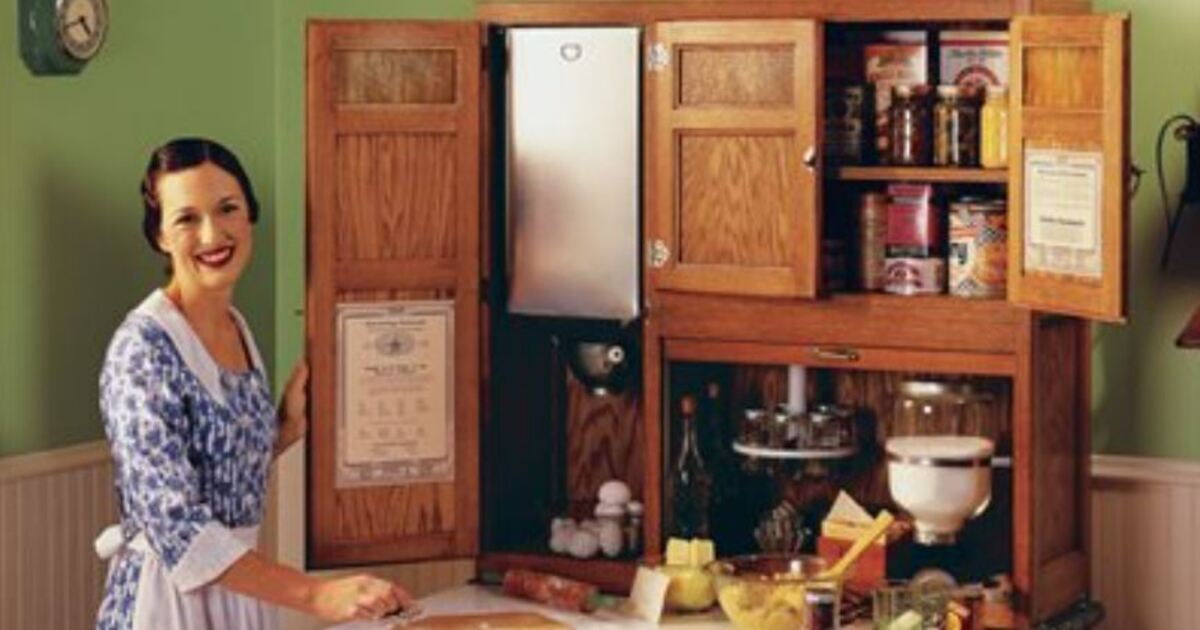A Pictorial History Of The Hoosier Cabinet (5 Photos)

source: Popular Woodworking
During the late 1800s and early 1900s, homes seldom featured built-in cabinetry. Consequently, with growing family sizes, the kitchen gradually evolved into one of the most crucial rooms within the household. This transformation sparked a movement in the late 1800s, advocating for the creation of an “Efficiency Kitchen” designed to streamline the management of kitchen-related items.
Moreover, as women became increasingly engaged in civic and local activities, they aimed to minimize their time spent in the kitchen and maintain cleanliness and organization. Predictably, a burgeoning industry emerged in response to these changes.
A photograph from 1917 showcases an Efficiency Kitchen display, featuring a novel cabinet design on the left.

The Hoosier Manufacturing Company, established in 1899 in New Castle, Indiana, foresaw this shift towards household efficiency. Their president, John M. Maring, envisioned a unique cabinet that would revolutionize the kitchen.
Their innovation culminated in a compact and well-organized cabinet, equipped to store everything from salt shakers to mixing bowls, along with essential tools like a built-in flour sifter. This concept resonated with the public, and the brand promoted the idea that their cabinet made kitchen work “a pleasure” while saving “a thousand steps.”

A 1906 advertisement from Good Housekeeping showcases an early iteration of the cabinet before it gained widespread popularity. The text touts its distinctive features, describing it as more convenient, practical, accessible, and sanitary than other cabinets, regardless of cost.
Another image from American Homestead displays a later ad for the Hoosier Cabinet, emphasizing the “Saves Steps” message, which clearly struck a chord with consumers.

As print magazines evolved to become more colorful and lavish, so did the advertisements for Hoosier Cabinets. One photograph demonstrates a Hoosier in use, highlighting the handy measuring guides often included in these cabinets.
With the growing popularity of Hoosier Cabinets, other companies, like the Sellers & Sons Company of Elwood, Indiana, joined the movement. They introduced innovations such as an “Automatic Lowering Flour Bin” and claimed at least 14 other improvements, including a dust-proof base top and ant-proof canisters.

Regrettably, the Hoosier Cabinets fell out of favor in the late 1920s due to the impact of the Great Depression. Nevertheless, their exceptional craftsmanship has allowed many to survive to this day. A photograph depicts a refurbished late-version Hoosier, often characterized by white paint and occasional colorful jade or red trim.

In recent years, a resurgence of interest in Hoosier Cabinets has emerged, with individuals sharing their efforts to restore old family heirlooms or thrift store finds. Two noteworthy examples include a project from A Simply Happy Home, where a husband and wife team successfully refurbished their grandmother’s cabinet, and another project from Natalie Creates, showcasing the meticulous restoration of an early 1900s model. These efforts inspire a revival of the Hoosier Cabinet’s legacy.
